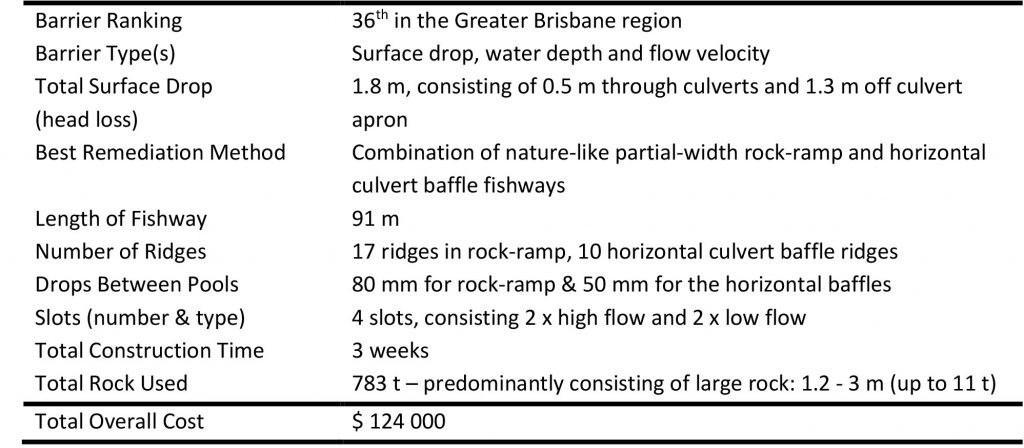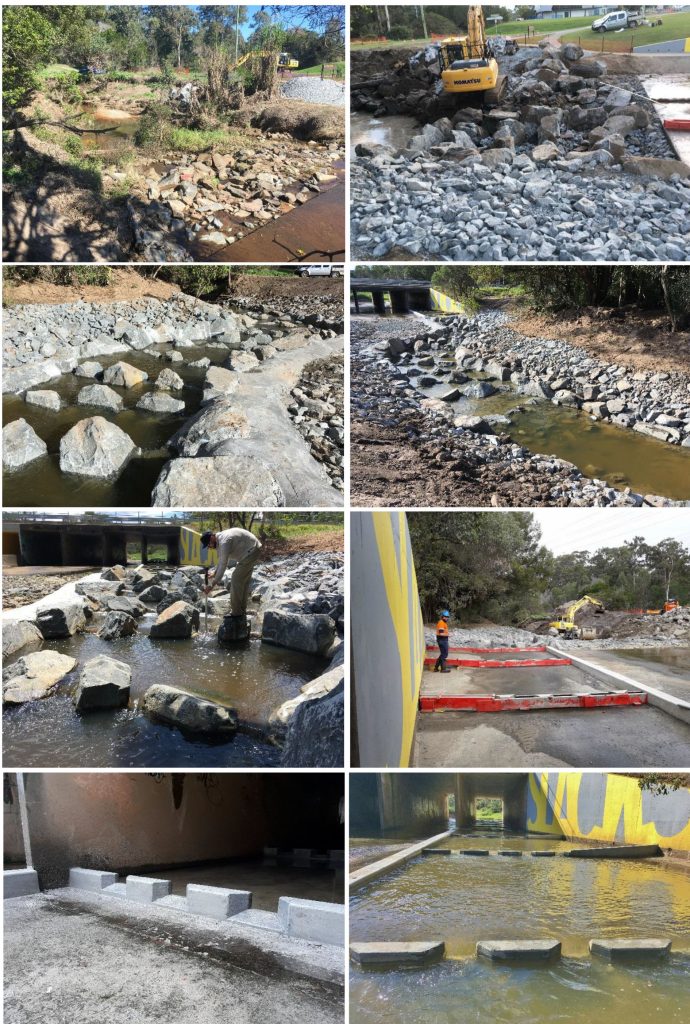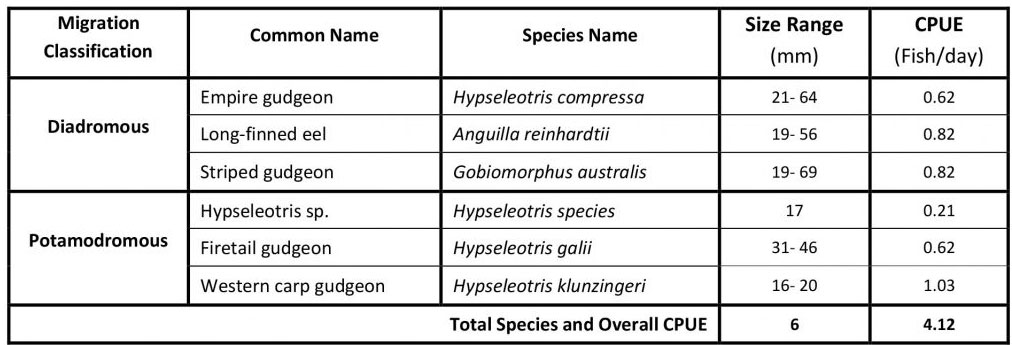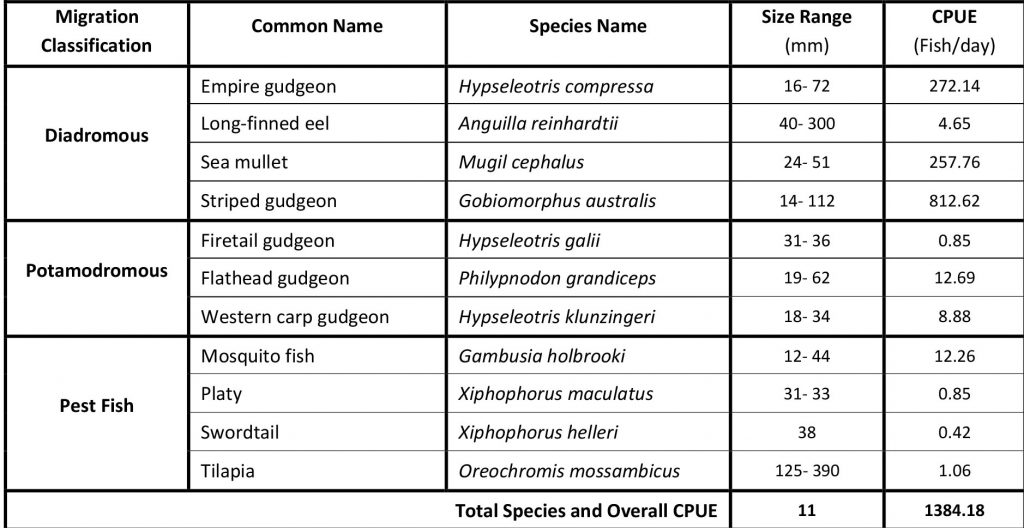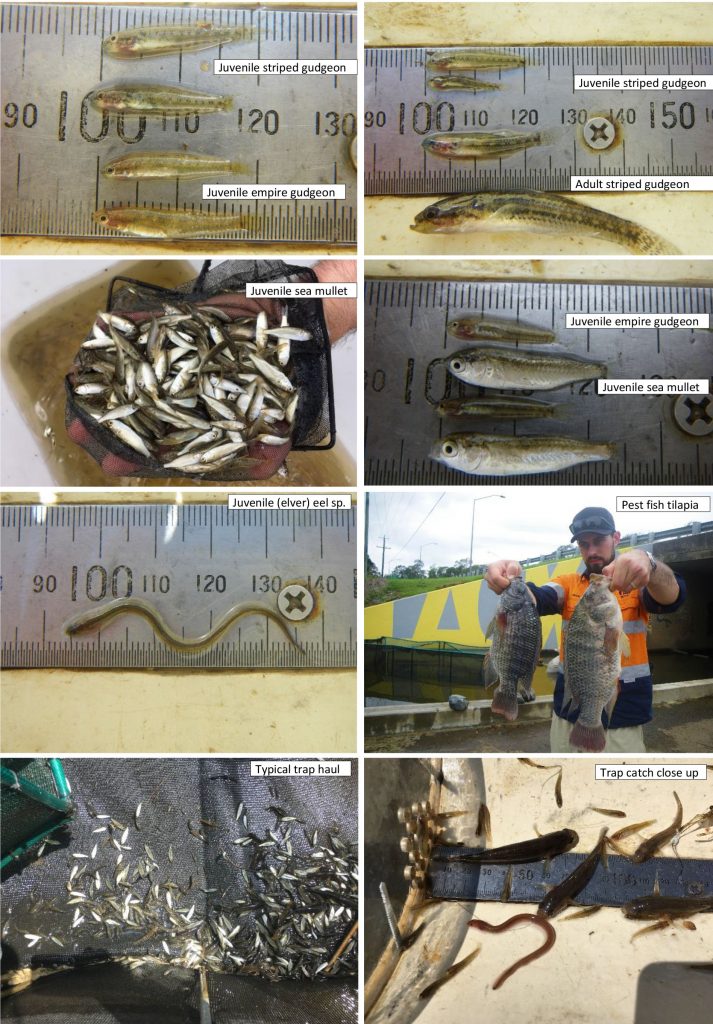Case Study 1 – Paradise Road Overpass, Slacks Creek
Case Study 1 – Paradise Road Overpass, Slacks Creek Introduction The remediation of the Paradise Road overpass barrier in Slacks Creek was undertaken in partnership between Logan City Council and Catchment Solutions. The Paradise Road overpass was ranked the 36th highest priority barrier in the GB region. A fish passage options assessment was undertaken to…
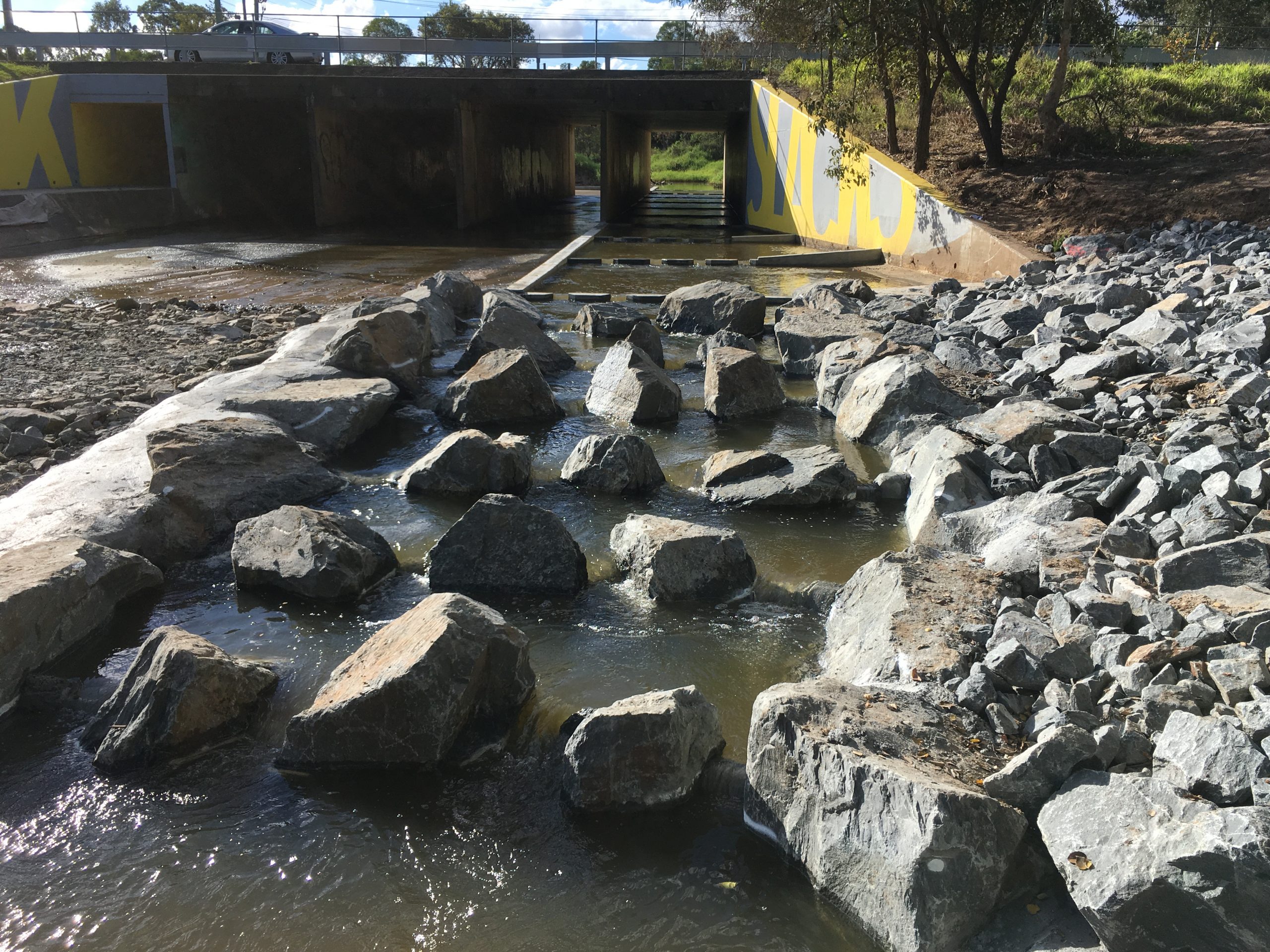
Case Study 1 – Paradise Road Overpass, Slacks Creek
Introduction
The remediation of the Paradise Road overpass barrier in Slacks Creek was undertaken in partnership between Logan City Council and Catchment Solutions. The Paradise Road overpass was ranked the 36th highest priority barrier in the GB region. A fish passage options assessment was undertaken to determine the most appropriate fish passage solution at this site. The investigation determined that a combination of two fishway designs would provide suitable fish passage; rock-ramp fishway to assist fish ascending the concrete culvert apron drop, and a series of horizontal concrete baffles retrofitted to the base of the culverts to assist fish passage through the 50 m long culverts (500 mm head loss).
Pre Fishway Construction Monitoring
Prior to fishway construction works, the barrier was monitored for one week to evaluate the overall impacts to the fish communities of Slacks Creek and determine how many, and what species, were making it past the barrier. Over almost five days of monitoring, six species were surveyed ascending the barrier, at an overall catch rate of 4.12 individual fish per day. Two of the fish species recorded in the trap; striped gudgeon and long-finned eel, possess an ability to climb vertical wet surfaces (barriers).
Post Remediation Works
Following the construction of the rock-ramp and horizontal baffle fishway, monitoring was again carried out to assess the success of the fishways at passing the full suite of fish species and size classes expected to occur within Slacks Creek. Over almost five days of monitoring, 6,546 fish representing 11 species were surveyed successfully ascending the fishways, at an overall catch rate of 1,384.18 fish per day. This is a substantial increase from pre-construction monitoring results of only 4.12 fish per day able to ascend the barrier, and highlights the numbers of fish which were previously trying to move past the Paradise Road overpass barrier, however were unable to do so. Significantly, juvenile diadromous fish species were recorded at the highest catch rates, with striped gudgeon captured at a rate of 812 fish per day, followed by empire gudgeon and sea mullet with 272 and 258 fish per day respectively. Native fish comprised 98.9% of the total catch (individuals), which again emphasises the importance of this remediated fish barrier.
